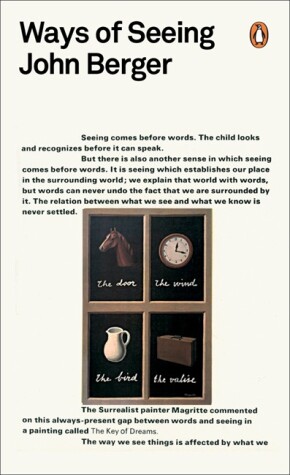Reviewed by clementine on
For the most part I really enjoyed this book and didn't find it dated at all even though it's well over 40 years old at this point. I have a pretty fair background in semiotics from my undergrad, and it meshed well with what I know. I don't know that there are many truly groundbreaking observations, but everything is phrased very well, elucidating things that I know to be true but that I had never myself articulated.
I personally liked the last three text-based essays the best. The second essay is about how women are constructed both in reality and in art, essentially as passive objects for the male subject to survey. (Like I said, nothing groundbreaking for the year 2016, but well-articulated! I particularly love the line "Men survey women before treating them. Consequently how a woman appears to a man can determine how she will be treated.") The third essay is about oil paintings as a function of capitalism (and, to an extent, colonialism). The final essay is about publicity (or marketing/advertising) and how it hails us as consumers: "The publicity image which is ephemeral uses only the future tense. With this you will become desirable. In these surroundings all your relationships will become happy and radiant."
I wouldn't say this is an extremely meaty book - in fact, it's quite spare. But it manages to fit a lot of eloquent wisdom into a small space. It's not exactly fun reading - it's a bit arty and definitely something I'd recommend to people who already have an interest in semiotics. I'm going to hold onto it because I think it'll be a handy reference in my academic career!
Reading updates
- Started reading
- 25 September, 2016: Finished reading
- 25 September, 2016: Reviewed

